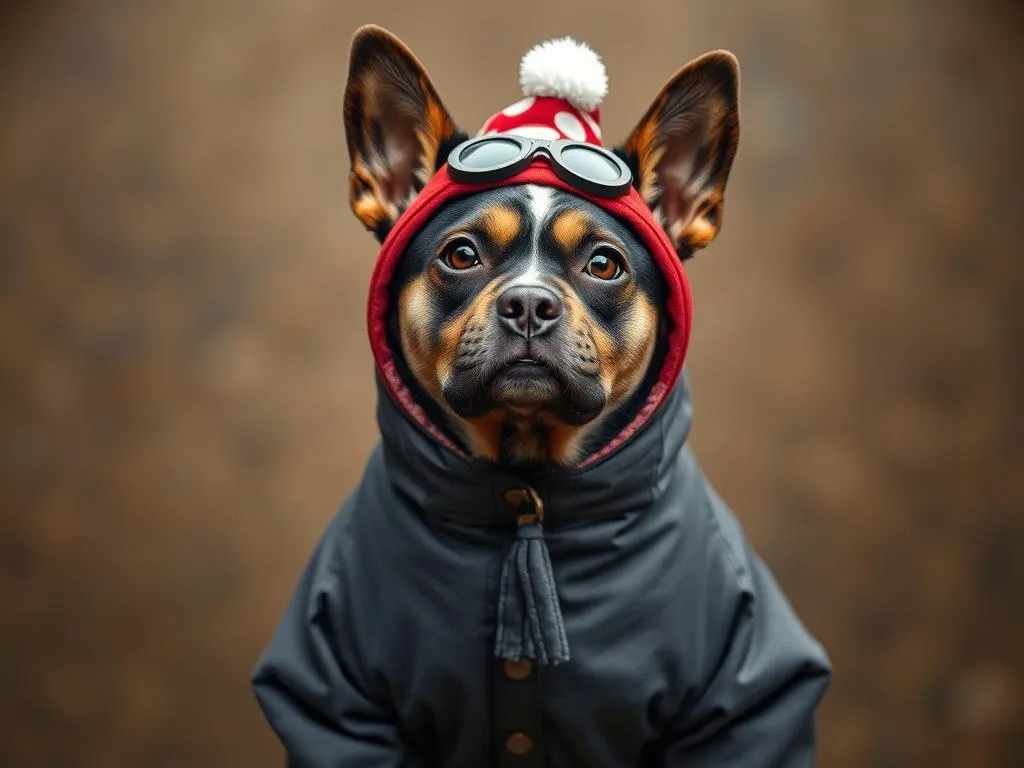
Dressing up pets in costumes has become a popular trend, especially during festive seasons like Halloween or during dog parades. However, it’s essential to consider whether our furry friends actually enjoy this practice. Understanding how dogs mind wearing costumes involves looking into their behavior, comfort, and the social dynamics that come with dressing them up. This article will explore the nuances of canine comfort, the benefits of wearing costumes, and how to do it safely and effectively.
Understanding Dog Behavior
Dogs’ Sensory Perception
Dogs experience the world differently than humans. Their senses—particularly smell and hearing—are far superior to ours. While we rely heavily on sight, dogs use their noses to explore their environment. This sensory perception can significantly influence how they react to wearing clothes. Costumes can feel foreign or uncomfortable to them, especially if they restrict their movement or alter their sensory experiences.
Wearing a costume may inhibit a dog’s ability to smell or hear properly, which can lead to discomfort or anxiety. Therefore, it’s crucial to be mindful of how clothing impacts their comfort levels.
Canine Body Language
A dog’s body language provides valuable insights into their feelings about wearing costumes. Positive signs include:
- Relaxed ears
- A wagging tail
- Playful behavior
Conversely, signs of discomfort can manifest as:
- Tucked tails
- Flattened ears
- Avoidance behavior
Being attuned to these signals can help owners gauge whether their dogs are enjoying their costume or if they would prefer to go without.
Benefits of Dressing Dogs in Costumes
Social Engagement
One of the most enjoyable aspects of dressing dogs in costumes is the social engagement it fosters. Whether at a Halloween party, dog parade, or a family gathering, costumes can spark conversations and create connections among pet owners. Dogs often become the center of attention, enhancing their interactions with both humans and other dogs.
Bonding Opportunities
Choosing to dress your dog can also strengthen the bond between you and your pet. It can be a fun activity that includes taking pictures, participating in costume contests, or even attending themed events together. These shared experiences contribute to a deeper relationship, making both the owner and the dog feel happier.
Mental Stimulation
Introducing new experiences, like wearing costumes, can stimulate a dog’s mind. Dogs thrive on variety, and a change in routine can be beneficial for their mental health. Costumes provide a novel experience that can help break the monotony of daily life, keeping them engaged and excited.
Considerations Before Dressing Your Dog
Assessing Your Dog’s Personality
Not all dogs are the same, and their personalities play a significant role in whether they will enjoy wearing costumes. Some breeds are more tolerant of clothing than others. For instance, smaller breeds like Chihuahuas may adapt quickly, while larger breeds might be more hesitant. Observing your dog’s temperament and past reactions to clothing can provide insight into their likely comfort level.
Choosing the Right Costume
When selecting a costume, consider several factors:
- Size and Fit: Ensure the costume fits well without being too tight or too loose.
- Material: Opt for breathable fabrics that won’t irritate your dog’s skin.
- Ease of Movement: Costumes should allow dogs to walk, sit, and play comfortably.
- Avoid Small Parts: Steer clear of costumes with small, removable pieces that could pose a choking hazard.
Safety First
Safety should always be a top priority. Costumes should not restrict a dog’s movement, sight, or hearing. Keep an eye on your dog while they are dressed up, and be prepared to remove the costume if they show signs of distress.
Tips for Introducing Costumes to Your Dog
Gradual Introduction
Introducing a costume gradually can help your dog adjust more comfortably. Start by letting your dog sniff and explore the costume before putting it on them. Gradually increase their exposure by allowing them to wear it for short periods.
Positive Reinforcement
Using treats and praise can make the experience more enjoyable for your dog. Create a positive association with the costume by rewarding them when they wear it. This helps them learn that wearing a costume can lead to fun and treats.
Short Sessions
Begin with short sessions where your dog wears the costume for just a few minutes. Gradually increase the duration as they become more accustomed to it. This approach prevents overwhelming them and helps them build confidence.
Expert Opinions and Research
Veterinarian Insights
Veterinarians often have valuable insights into the implications of dressing dogs in costumes. They emphasize the importance of monitoring your dog’s health while wearing clothing. Some concerns include overheating, skin irritation, and restricted movement. Ensuring that costumes are not overly tight or made from materials that could cause allergic reactions is crucial.
Behavioral Specialist Views
Canine behaviorists highlight that dogs can experience stress when wearing costumes. They recommend observing your dog’s behavior closely and being ready to remove the costume if they exhibit signs of discomfort. Experts advise engaging in training and positive reinforcement techniques to help dogs associate costumes with positive experiences.
Conclusion
Understanding whether dogs mind wearing costumes involves considering their comfort, personality, and overall well-being. While many dogs may enjoy the social engagement and bonding opportunities that come with dressing up, it’s essential to approach the practice thoughtfully. Always prioritize your dog’s feelings and comfort.
By taking the time to introduce costumes gradually, choosing appropriate attire, and monitoring your dog’s reactions, you can create a positive experience. Ultimately, responsible pet ownership means being attuned to our pets’ needs and ensuring their health and happiness, even when they’re dressed to impress.
FAQs
Do all dogs dislike wearing costumes?
Not all dogs are averse to costumes. Individual differences in personality and breed can influence how a dog reacts to being dressed up. Some dogs may enjoy the experience, while others may find it uncomfortable.
What types of costumes are best for dogs?
Costumes that are lightweight, breathable, and easy to wear are generally best for dogs. Popular choices include simple bandanas, capes, and well-fitting shirts. Avoid anything too restrictive or heavy.
How can I tell if my dog is stressed in a costume?
Signs of stress or discomfort in dogs can include panting, whining, hiding, or trying to remove the costume. If you notice these behaviors, it’s best to remove the costume immediately.
Can I dress my dog for everyday activities?
While it’s common to dress dogs for special occasions, daily costumes may not always be practical. Focus on comfort and appropriateness when considering costumes for everyday wear. Some dogs may enjoy wearing light sweaters or jackets during colder weather, but they should always be comfortable and unrestricted.
By taking into account these considerations and tips, dog owners can make informed choices about whether to dress their furry friends in costumes, ensuring that their pets are happy and comfortable throughout the experience.









